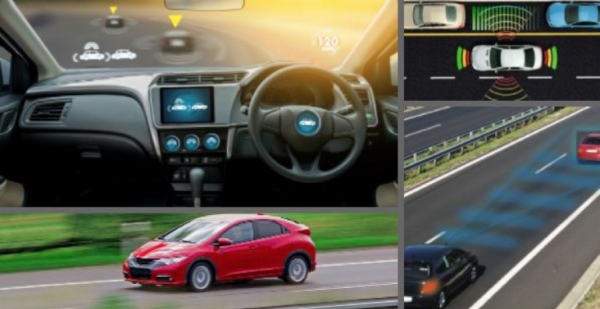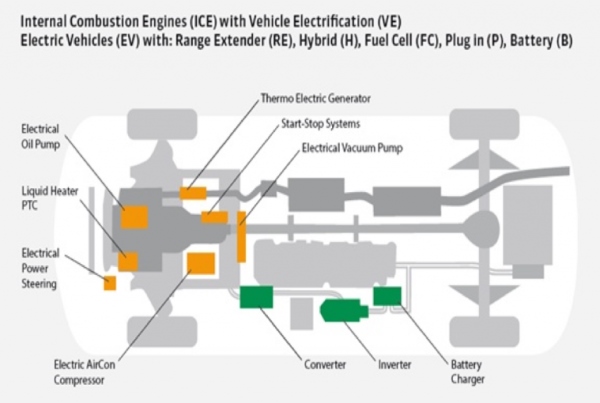
Published
by Rogers Corporation
Advanced Electronics Solutions
A global push to reduce CO2 emissions, as well as government incentives and consumer demand, is leading the world’s largest automotive manufacturers to accelerate plans to introduce all-electric and hybrid-electric (EV/HEV) models.
At the same time, advanced safety features that were once limited to luxury models – like forward collision warning and blind spot detection – are being introduced on more mass models.
Rogers delivers solutions for a host of Advanced Mobility solutions that address the toughest material challenges in these applications.
Many of the world’s best-selling EVs/HEVs include Rogers advanced materials.
- Our curamik® Performance silicon nitride substrates for Wide Bandgap Semiconductors offer high thermal conductivity and reliability which are essential for EV/HEV applications.
- PORON® and BISCO® elastomer materials provide unique sealing and vibration solutions, protecting HEV batteries from environmental elements while reducing noise.
- Our compact and light-weight power distribution and thermal management solutions enable increased driving ranges for EV/HEV vehicles. ROLINX® CapEasy and ROLINX® CapPerformance capacitor-busbar assemblies can save size, weight, and energy while efficiently distributing energy in powertrains: www.rolinx.com
Maximizing Electric Power Efficiency with Vehicle Electrification
Automotive design engineers are looking for innovative solutions to maximize electric power efficiency of EVs/HEVs. As vehicle electrification continues, designers need to ensure sufficient and efficient power to all electrical components of the car, including electrical power steering, air conditioning, oil pumps.
Semiconductor-based power systems not only improve battery efficiency, but also optimize overall system cost, minimize power losses and more.
When creating these power systems, designers choose ROLINX® busbars and curamik® ceramic substrates. For example, our silicon nitride substrates for wide-band gap semiconductors offer high thermal conductivity and reliability.
Connectivity and Safety
The growing adoption of safety features in mass market models has accelerated the demand for innovative Advanced Driver Assistance Systems (ADAS) utilizing a variety of sensor technologies and safety systems.
New Car Assessment Programs (NCAP) worldwide are driving more robust crash avoidance technologies, requiring innovative ADAS. Automotive design engineers strive to meet high performance and reliable connectivity challenges.
Rogers’ high-frequency materials are the first choice for engineers when designing ADAS technologies such as adaptive cruise control, collision avoidance, blind spot detection, rear cross traffic alert, and more.
Tags:
Automotive & EV/HEV, Autonomous Driving
Published on May 02, 2018


